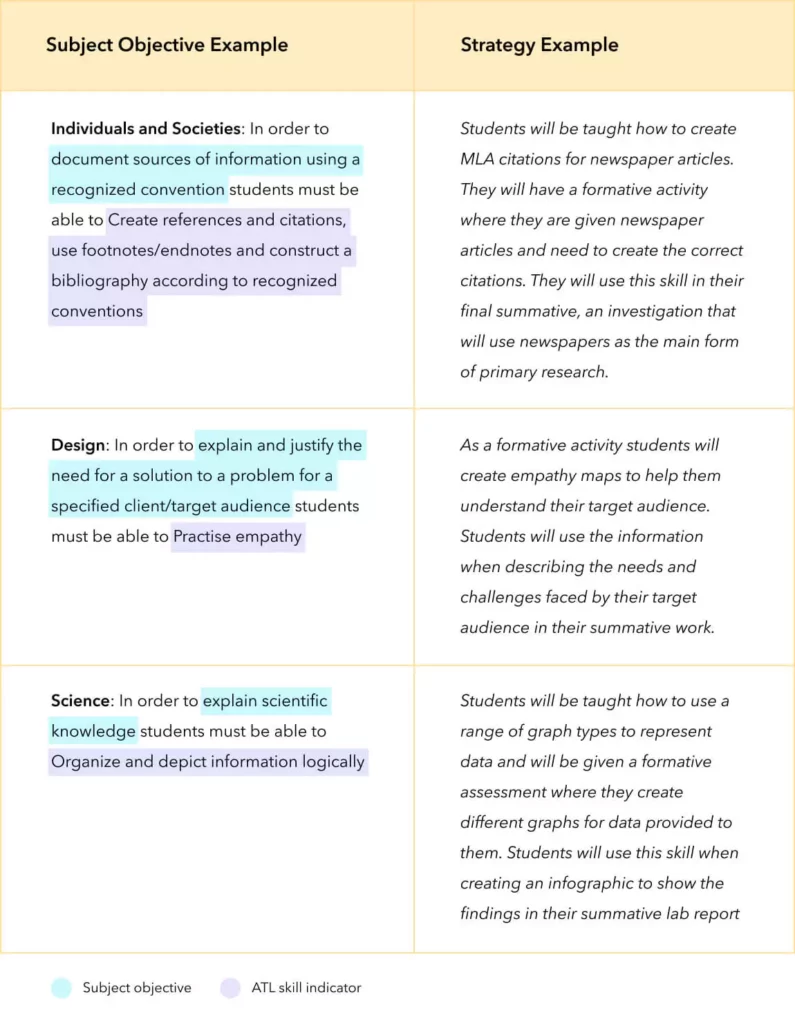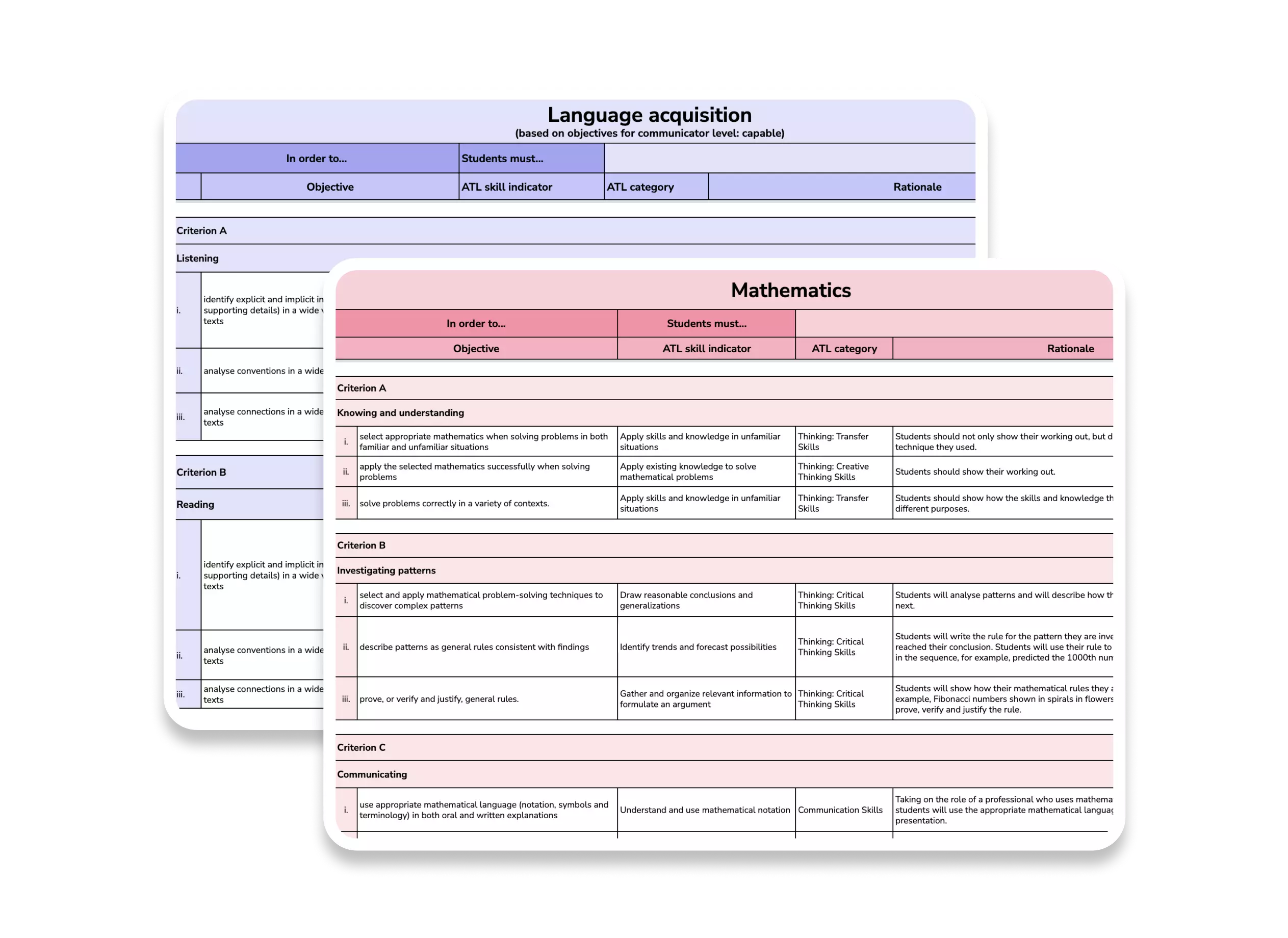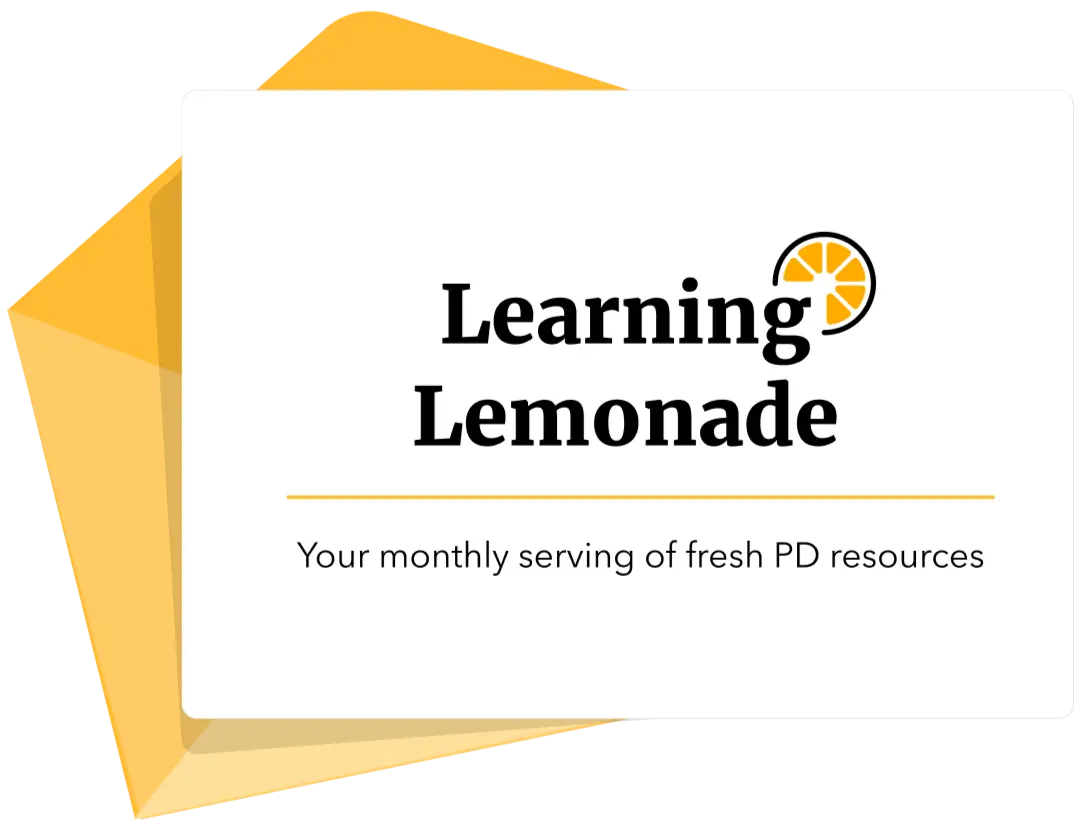Aligning ATL Skills with MYP Subjects
How to select and map relevant ATL skills to your subject group
When creating our unit planners we document the Approaches to Learning (ATL) skills connected to our unit. It can be easy to just select a lot of ATLs that students practise, demonstrate or use in a unit, but this can leave us with a long list of skills selected, with little information about how we are helping students to develop those skills. For example, students probably ‘give and receive meaningful feedback’ every lesson, so selecting this in our unit planner is not going to be useful. Imagine if every unit had that skill selected – it would become redundant or superfluous!
When we select ATL skills to document in our unit, there are two questions we can ask ourselves to make sure we are only selecting the relevant skills:
- Are we giving students a specific strategy to help them develop those skills?
- Do students need to demonstrate the ATL skill to help them meet our subject objectives?
ATL strategies for students
An important step in explicitly teaching ATLs is by giving students clear strategies to develop identified skill(s). Some examples of ATL strategies that can be shared with students are:
- TAGGING: T = Tell someone something you like. A = Ask them a question. G = Give them a suggestion. Similar strategies include ‘praise, question, suggestion’, feedback sandwiches and WWW/EBI (what worked well – even better if)
- Gallery Walk: Have students display their work around the room. Students can look at each other’s works and leave comments on post-it notes. Here you could even get students to TAG on their post-it notes!
- Dot-Voting: Give students coloured stickers to give simple feedback during a gallery walk. For example, a green sticker can be for a piece of work they personally connected with and a blue sticker can be for the work that surprised them the most. As a class, you can have students assign meaning to the different colours. You can also have a class discussion where students share why they gave different work different stickers and also the class can discuss any patterns they see.
- Speed-Sharing: Have students share their ideas with their classmates and gather feedback quickly. Have students walk around the classroom, and then when you clap they should partner with the nearest student. One student shares their ideas for one minute, then the other student gives feedback for one minute. They then swap. Use clapping to track the time and prompt students to avoid silence!
Aligning ATLs with subject objectives
When thinking about the ATL skills that are needed to achieve a subject objective, we can use the formula for an ATL Statement. Here is a suggested formula for creating an ATL statement for your subject:
In order to Subject objective students must be able to ATL skill indicator.
The identified skill might be used in the summative assessment or just during a learning experience in the preparation for the assessment. Some examples of ATL statements for different subjects are:
- Individuals and Societies: In order to document sources of information using a recognized convention students must be able to Create references and citations, use footnotes/endnotes and construct a bibliography according to recognized conventions
- Design: In order to explain and justify the need for a solution to a problem for a specified client/target audience students must be able to Practise empathy
- Science: In order to explain scientific knowledge students must be able to Organize and depict information logically
Note: When teachers carefully select an ATL skill needed to help support students meet the objective, it does not mean that students must use that skill every time they address that objective.
You can also watch this video by Nadia Abdallah to better understand how to create ATL statements!
Aligning strategies and subject objectives
Teachers all have a toolkit of resources they use with their students but don’t always realise that the strategies they teach enable students to develop their approaches to learning. Teachers also teach these strategies with a purpose but don’t always explicitly line them up with their subjects’ objectives. Bringing together the strategies and the subject objectives will tackle these two problems, as shown in the example below:

Getting you started!
There are certain ATL skills that align nicely with different subject objectives. For example, for the MYP Math objective ‘Select appropriate mathematics when solving problems in both familiar and unfamiliar situations‘, the obvious ATL skill would be ‘Apply skills and knowledge in unfamiliar situations’.
To help schools get started on aligning and explicitly documenting ATLs, here is a spreadsheet with the objectives for every subject, along with suggested ATL skills students could use to help them meet that objective. You will be prompted to make a copy and can use it to brainstorm with your teaching teams. You can also watch this video walkthrough below, where I explain how the spreadsheet works for you to get a clearer understanding of how to embed appropriate skills into your units.
In subject teams, you may wish to go through and discuss – and potentially change – each suggestion made for your subject in the spreadsheet. You could also select more than one skill indicator you think is important for each skill cluster. Looking through this spreadsheet might help you realise the strategies that you are already using or might help you realise gaps that need to be filled.
Download the spreadsheet and use it as a tool to help you reflect on and develop strategies to support students’ ATL skill development in a powerful and meaningful way!
Liked this resource? Here are a few more you might like to explore:
















